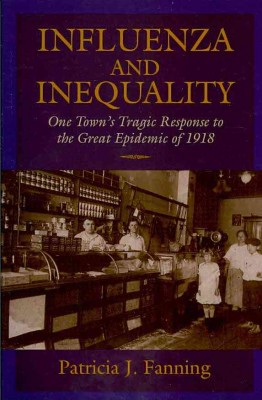| Influenza and Inequality: One Town's Tragic Response to the Great Epidemic of 1918 Contributor(s): Fanning, Patricia J. (Author) |
|
 |
ISBN: 1558498125 ISBN-13: 9781558498129 Publisher: University of Massachusetts Press OUR PRICE: $25.60 Product Type: Paperback - Other Formats Published: October 2010 |
| Additional Information |
| BISAC Categories: - History | United States - State & Local - New England (ct, Ma, Me, Nh, Ri, Vt) - History | United States - 20th Century - Medical | History |
| Dewey: 614.518 |
| LCCN: 2010014693 |
| Physical Information: 0.5" H x 6.1" W x 8.96" (0.62 lbs) 186 pages |
| Themes: - Geographic Orientation - Massachusetts - Chronological Period - 1900-1919 |
| Descriptions, Reviews, Etc. |
| Publisher Description: The influenza epidemic of 1918 was one of the worst medical disasters in human history, taking close to thirty million lives worldwide in less than a year, including more than 500,000 in the United States. What made this pandemic even more frightening was the fact that it occurred when death rates for most common infectious diseases were diminishing. Still, an epidemic is not merely a medical crisis; it has sociological, psychological, and political dimensions as well. In Influenza and Inequality, Patricia J. Fanning examines these other dimensions and brings to life this terrible episode of epidemic disease by tracing its path through the town of Norwood, Massachusetts. By 1918, Norwood was a small, ethnically diverse, industrialized, and stratified community. Ink, printing, and tanning factories were owned by wealthy families who lived privileged lives. These industries attracted immigrant laborers who made their homes in several ethnic neighborhoods and endured prejudice and discrimination at the hands of native residents. When the epidemic struck, the immigrant neighborhoods were most affected; a fact that played a significant role in the town's response--with tragic results. This close analysis of one town's struggle illuminates how even well-intentioned elite groups may adopt and implement strategies that can exacerbate rather than relieve a medical crisis. It is a cautionary tale that demonstrates how social behavior can be a fundamental predictor of the epidemic curve, a community's response to crisis, and the consequences of those actions. |